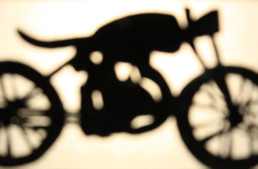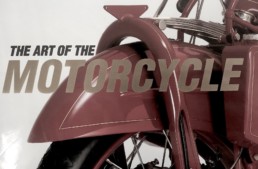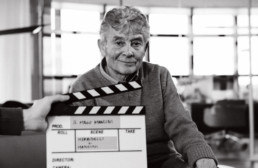Words and Illustrations by Martin Squires
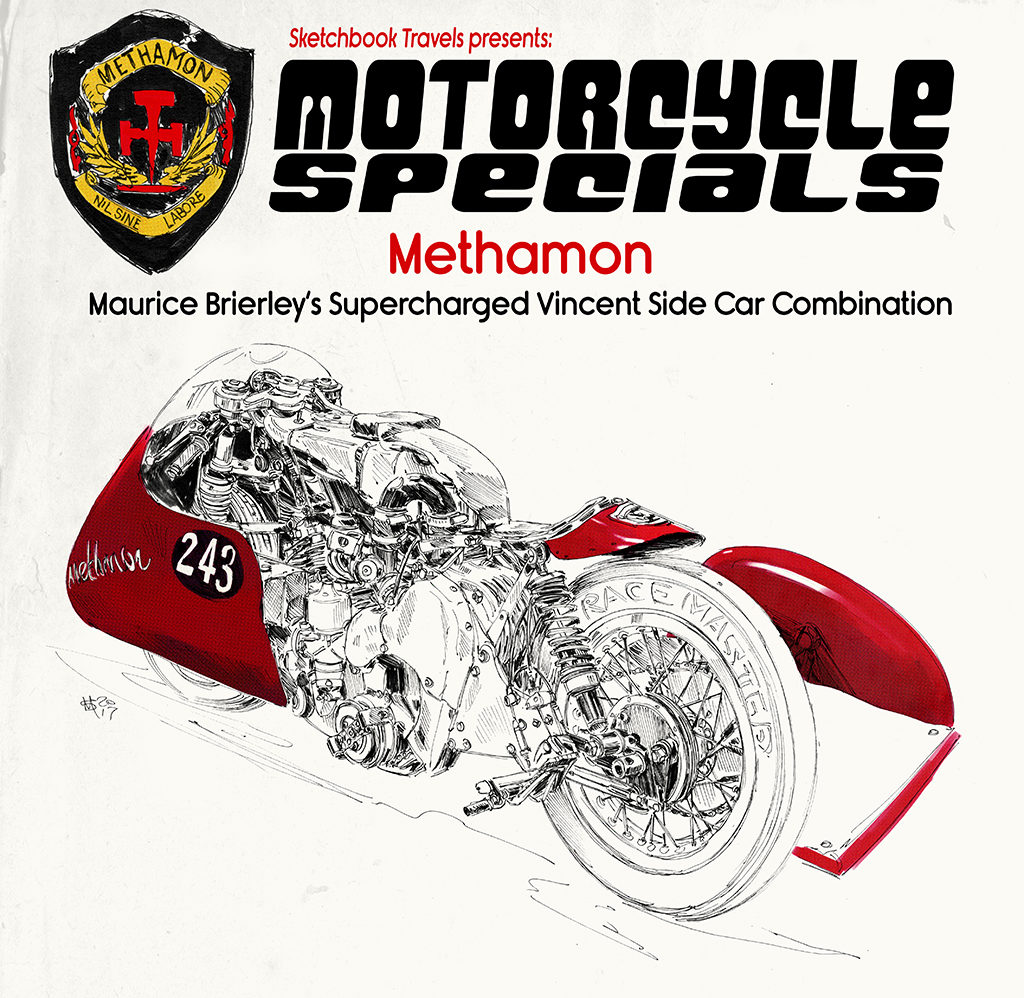
Maurice Brierley had worked for de Havilland in the early 1950s and was an accomplished engineer, despite sometimes being described as a quintessential ‘English eccentric.’ Outside of his work for de Havilland, Maurice competed in hill climbs and sprints, using both cars and motorcycles. In the early 1950s, while leaving work on his motorcycle from the de Havilland site in Hatfield, he was side-swiped by a car, with the accident resulting in him losing his right leg. This didn’t deter Maurice from continuing to indulge in his love of racing. In 1959, he built and subsequently ran a Vincent sidecar outfit, a third-wheel chosen for stability due his now missing right leg. The special sidecar was provided by Watsonian and fitted on the ‘wrong’ side which gave Maurice somewhere to rest his false limb. Maurice had quite a few passengers, but the platform was often frequented by Sheelagh Neal, in a feet first position. This enabled Sheelagh to keep her weight towards the back for better traction.
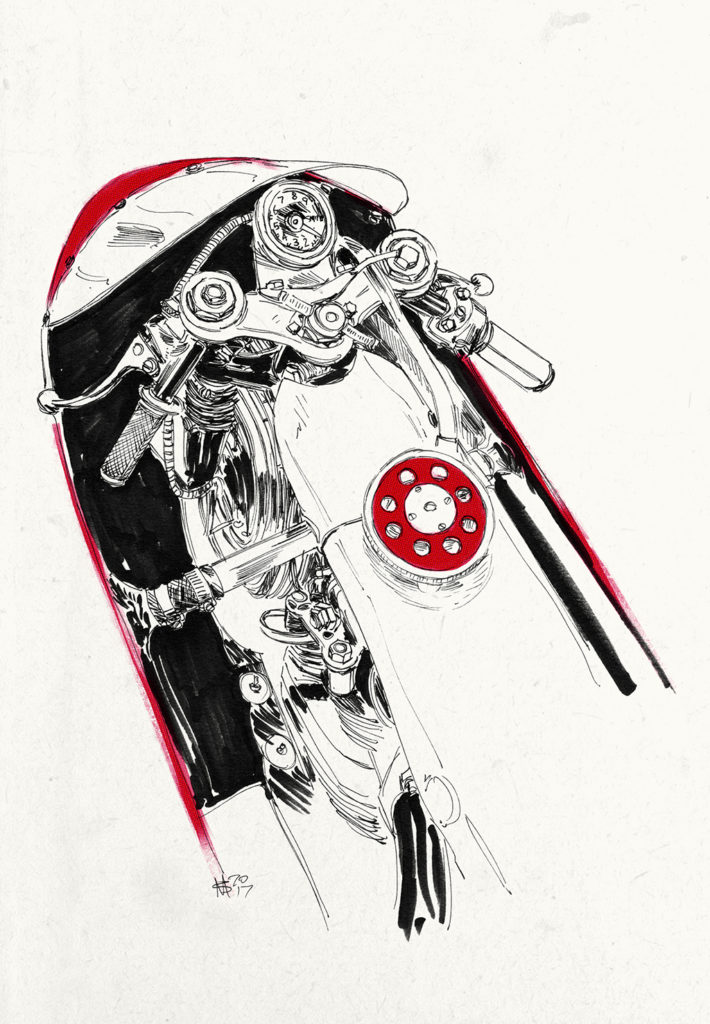
The Vincent engine was developed to such an extent that it exceeded what could be measured on Maurice’s home-made dynamometer and once he reached the limit with normal aspiration, he made the decision to run a C142 Shorrock supercharger. This is a large 1500cc supercharger that runs at about 15-18psi of boost. Different valve timing and compression ratios were employed on front and back cylinders in order to compensate for the different lengths of pipe from the supercharger. The cylinders run 90mm bore Manx Norton pistons – taking the total capacity out to 1142cc – and are topped off with big port Vincent Grey Flash heads. Typical of the time, Maurice was using parts that were plentiful and affordable and using them to their best ability.
Moving over to the supercharged incarnation, Maurice had to lengthen and lighten the chassis. The outfit has many nuts and bolts that were used in the aviation industry, due to his work at de Havilland. Another thing that comes through from Maurice’s engineering background is that there are no washers in sight; he believed that they were unnecessary and only added weight. Methamon was also fitted with AJS 7R forks and brake and an extended Velocette swinging arm.
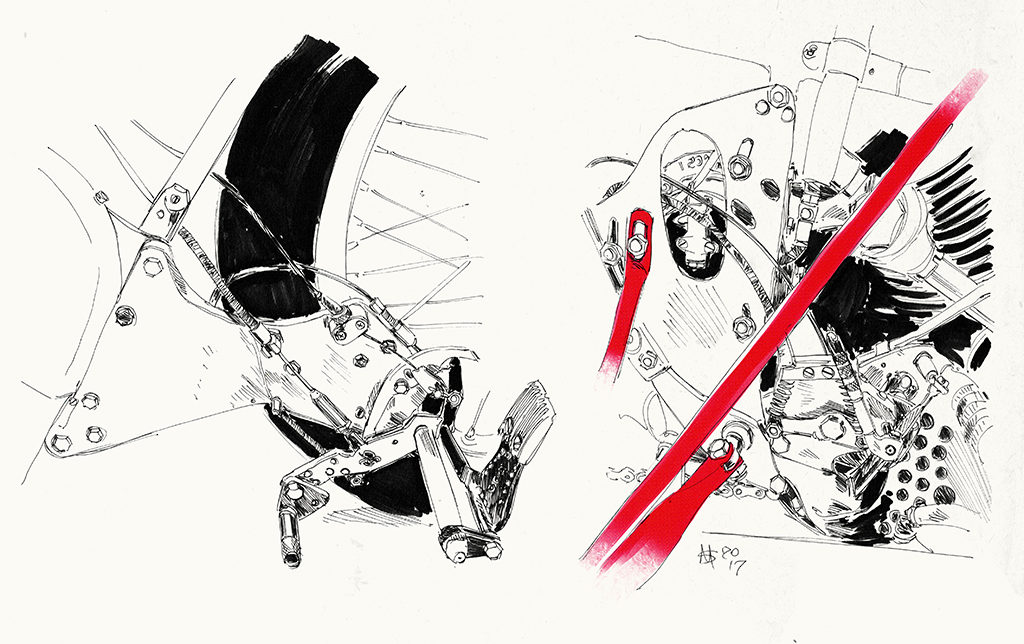
With only the use of his left leg, Maurice adapted Methamon to have all the foot controls on that side. These incorporated a rear brake that would partially lock on, enabling Maurice to engage first gear ready for take-off and stop the wheel from spinning too much on leaving the start line. The brake is automatically released on engaging second gear.
Over a period of four years, Maurice and Methamon dominated the 1200cc three-wheeled class. On June 20, 1964, Maurice set two world records at Chelveston Airfield – the One Kilometre Flying Start at 222.952kph (138.536mph) and the One Kilometre Standing Start at 154.825kph (96.204mph). Having set these records, Castrol offered to sponsor Maurice to go to the USA to attempt to break the 200mph barrier. But due to Castrol moving funding to the Monty Carlo Rally, Maurice was subsequently told there was no money left to fund his attempt. After this, he felt that he had taken his sprinting as far as he could and retired. His parting song to the sprinting world was a small book called ’Supercharging Cars and Motorcycles,’ a concise 56-page volume which is something of a bible on the subject of superchargers.
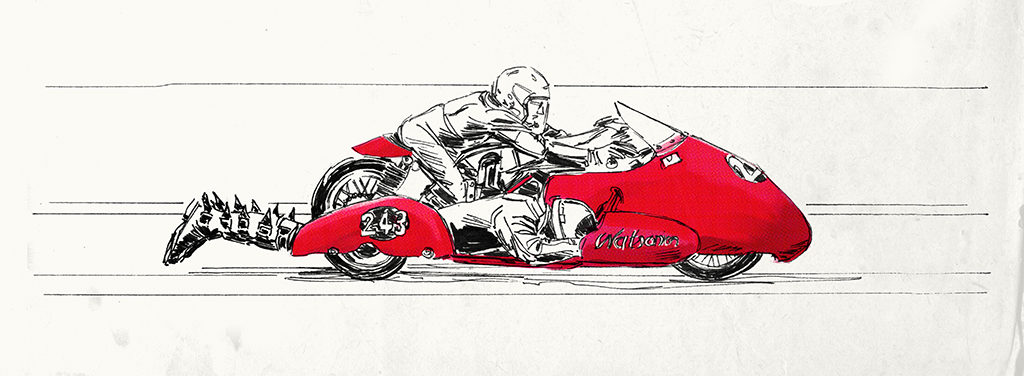
Initially, Methamon was displayed in the Shuttleworth Collection in Bedfordshire, before being donated to the VMCC museum at Stanford Hall. From here it disappeared, eventually ending up in the basement of the Donington Park Museum, still geared to exceed 200mph. In 2010, it was exhumed from the basement to be resurrected by the duo of Chris Illman and Colin Jeffries of the VMCC Sprint Section. Their first run on the sidecar outfit was at Mallory Park in 2011 at the Festival of 1000 Bikes and it has been run in competitive sprints and demonstrations ever since, with times now equalling those of Brierley at his peak.
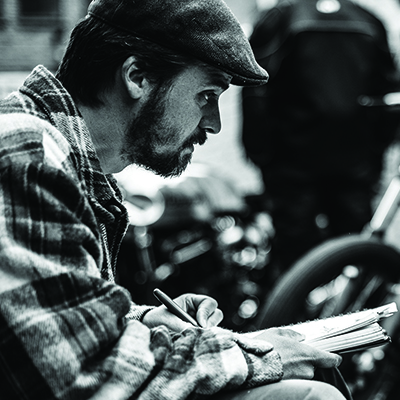
Related Posts
July 8, 2017
The Vintagent Trailers: Mancini, The Motorcycle Wizard
The mechanic that helped debut five of…
